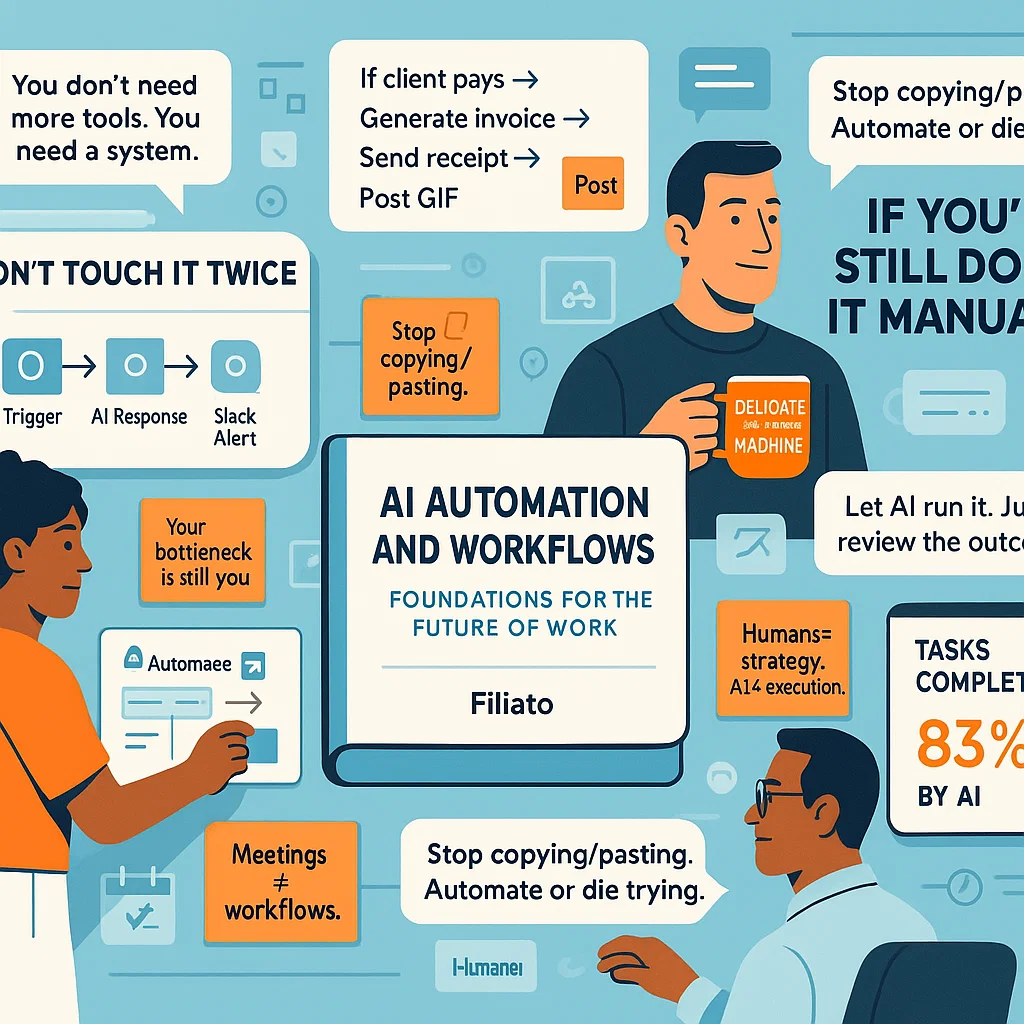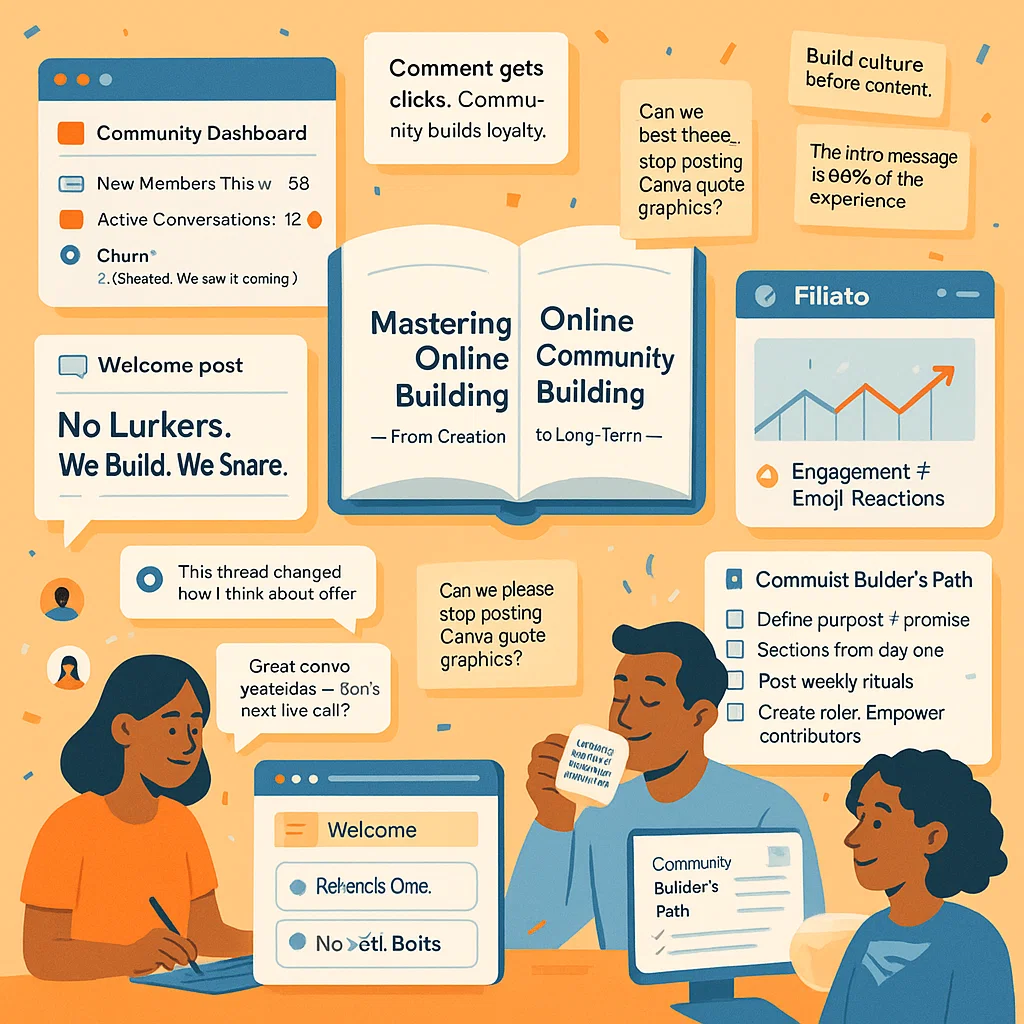Mastering the Art of Business in 2025: What Most New Entrepreneurs Get Wrong (and How to Get It Right)
Ask any successful entrepreneur what made the biggest difference in their journey, and it likely won’t be money, education, or luck. It will be mindset, execution, and resilience.
In today’s fast-paced world of startups, content creators, and solo founders, launching a business isn’t the hard part—it’s sticking with it long enough to make it work. That’s where most people go wrong.
This article distills core insights from The Ultimate Guide to Mastering Business by Filiato and presents a fresh, realistic roadmap for building a business in 2025—from the first spark of an idea to your eventual exit strategy.
It All Starts With Mindset
Before business plans, logos, or websites, you need something more foundational: the right mindset. Entrepreneurship begins in your head long before it shows up in your bank account.
Traits like resilience, delayed gratification, and optimism balanced with realism are not optional—they are critical. Entrepreneurs who learn to embrace failure, act on feedback, and stay persistent during slow growth seasons are the ones who succeedThe Ultimate Guide to M….
Resilience isn’t just about bouncing back from failure—it’s about learning faster, reframing setbacks, and staying adaptive. Entrepreneurs like Sara Blakely, Jeff Bezos, and Elon Musk didn’t avoid problems—they used them as pivotsThe Ultimate Guide to M….
From Idea to Execution: What Actually Works
Too many first-time entrepreneurs obsess over perfection—business plans, branding, product details. In reality, the best strategy is starting small, testing fast, and iterating quickly.
Here’s a simplified breakdown of how to move from concept to reality:
- Start with a Mind Map – Forget the 30-page business plan. Use visual brainstorming to connect ideas, explore options, and create an MVP (minimal viable product).
- Validate Early – Talk to real people. See if they’ll use or pay for what you want to offer. Surveys, free trials, or pre-orders are key signals.
- Build Lean – You don’t need funding to start. Use low-cost tools, bootstrap your first sales, and reinvest profit into growthThe Ultimate Guide to M….
- Launch, Learn, Repeat – Speed matters more than polish. The feedback you get from launching early is more valuable than the perfect product that never ships.
If you can consistently commit 1–2 focused hours a day on these tasks, you’ll outpace the majority who spend months planning but never move.
Funding Your Vision: Real-World Options
Yes, capital helps—but it’s not a requirement. In fact, many successful founders recommend bootstrapping until absolutely necessary. Why? It keeps you in control and forces focus.
Options to consider:
- Bootstrapping: Use personal savings, freelance income, or reinvested revenue to fuel early growth.
- Crowdfunding: Platforms like Kickstarter are great for testing demand while raising funds.
- Grants and Loans: Explore local business grants or low-interest loans tailored for startups.
- Investors: Consider angel investors or VCs only when you have proof of traction and scalabilityThe Ultimate Guide to M….
Smart funding isn’t about how much money you raise—it’s about using the right amount, at the right time, with the right strategy.
Marketing and Sales: It’s All About the Right Message
You don’t need a massive ad budget to market effectively. You need clarity, consistency, and connection.
Top-level tips:
- Know your audience deeply—pain points, desires, language
- Create content that informs, entertains, or solves a real problem
- Use organic platforms first: blog posts, SEO, social media, email
- Build relationships, not just leads
Sales, especially early on, comes from trust. And trust is built through repeated, value-driven interactions—before and after the purchase.
Build to Last: Systems, Teams, and Culture
Once your product fits the market and sales are happening, it’s time to stabilize and grow. That means shifting focus from hustle to systems.
- Processes: Document everything from onboarding to delivery
- Automation: Use tools for emails, inventory, support
- Hiring: Start with freelance help or part-time contractors
- Culture: Define your values, lead by example, and reward initiativeThe Ultimate Guide to M…
Growth without structure leads to burnout. With structure, you create freedom—for yourself and your team.
Purpose as Strategy
Businesses with a clear purpose outperform those that only chase profits. Why? Purpose attracts loyalty—from both customers and employees.
Find the intersection between what you care about and what the market needs. Then embed that purpose into every touchpoint: branding, messaging, product design, and even partnershipsThe Ultimate Guide to M….
The result? A brand people want to support—and talk about.
Exiting Gracefully: Have an Endgame
Whether you want to sell, step back, or scale into something bigger, planning your exit from day one gives you clarity.
Options include:
- Selling to a competitor
- Passing the business to a family member or team
- Licensing your systems or IP
- Liquidating and moving on
Whatever your plan, a well-documented business with consistent revenue and a loyal audience is far easier to sell—or step away from—successfullyThe Ultimate Guide to M….
Final Thought: Business Isn’t Just About Money—It’s About Mastery
Building a business is about learning, evolving, and creating something that matters—to you and to others. The money is a byproduct of the value you create.
The Ultimate Guide to Mastering Business from Filiato exists for this reason: to help you build smarter, grow faster, and lead with purpose.


